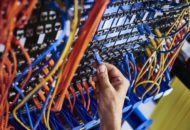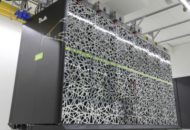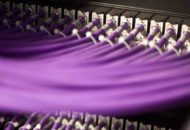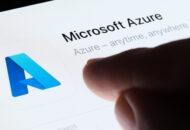Smart cards seem such a wonderful idea that it is surprising how long it is taking for them to replace the magnetic stripe card. It is the same old problem; it is difficult to implement a significant change while there is such a huge installed base of specialised terminals such as ATMs and EPOS systems that accept magnetic cards.
The other problem is another age old one, very prevalent in IT, that of standards, or to be more accurate lack of them. A magnetic stripe is a simple piece of technology and it is easy to create a wide range of readers that can take the small amount of data off the card. The problem with standards with respect to magnetic stripe cards in the past has been with higher level protocols between terminals, networks and computers. There have also been a lot of problems surrounding business politics. Remember how long it took to get ATM networks to inter-work, long after the technical problems were resolved. There is a long way to go yet before adequate standards for the bulk of smart card systems is stabilised in an International climate.
The two key problems to be faced are on one hand the fact that there is a wide range of devices which can be loosely called "smart cards", while on the other hand there is a reluctance of the Americans to accept International standards that they have not invented. As a result America, potentially the biggest market for smart cards, is dragging its heels.
The simplest form of device that could conceivably be classed as a smart card is a memory card. These simply store data in a semi-conductor memory rather than on a magnetic stripe. As a result they can store more data, can update data and are less prone to physical damage compared to the normal credit or loyalty card. These are also amusingly known as e-purse cards. They store data in blocks of typically 256 bytes, with capacities up to 32 Kbytes, a limit which will get higher in time. Largely the upper limit is controlled by price more than technology. These can be made in huge volumes and can cost a few cents, only a little more than a magnetic stripe card. A major advance with a memory card over a magnetic stripe is a feature which allows individual blocks of data to be protected, i.e. they cannot be read from or written to unless a correct password is first written to the card. In effect these cards have a "hard wired" protection system, not as flexible as one controlled by a processor, but cheap and adequate for a lot of applications. The chip cards used in public telephones are an example of this type of card.
The truly smart cards however feature a computer on the card, a big advance from a memory card. It is one of those wonders of modern integrated circuit technology. Miniaturisation has made it possible to implement a complete computer on a chip which is physically embedded in a card. A standard "credit card" size will be commonly accepted but there will be some more specialised alternatives. The SIM card used in a mobile phone is a good example of a physical smart card designed for a specific job; that format would be useless as a general card. The other requirement that the technology appears able to satisfy in the long term is cost. Made in huge quantities (the importance of standards!) they will probably be cheaper than the multiplicity of magnetic stripe cards that the one card will replace. It is still incredible to realise just what the technology has achieved, although we mustn’t get carried away with the technology for its own sake.
However there is still a long way to go. The magnetic stripe simply records a few bytes of data; the smart card is a programmable computer so that even if they can be made low cost, the computer-on-a-chip cards will always be relatively more expensive.
The smart card really does contain a complete computer. Currently it is an 8-bit processor (similar to an 8051) that is the most cost effective, with a price tag under $1.00 in volume. However 16-bit and 32-bit processor versions are being developed, albeit currently at a much higher price, around $50.00 each.
How best to take advantage of all this is the next problem!
Martin Healey, pioneer development Intel-based computers en c/s-architecture. Director of a number of IT specialist companies and an Emeritus Professor of the University of Wales.





